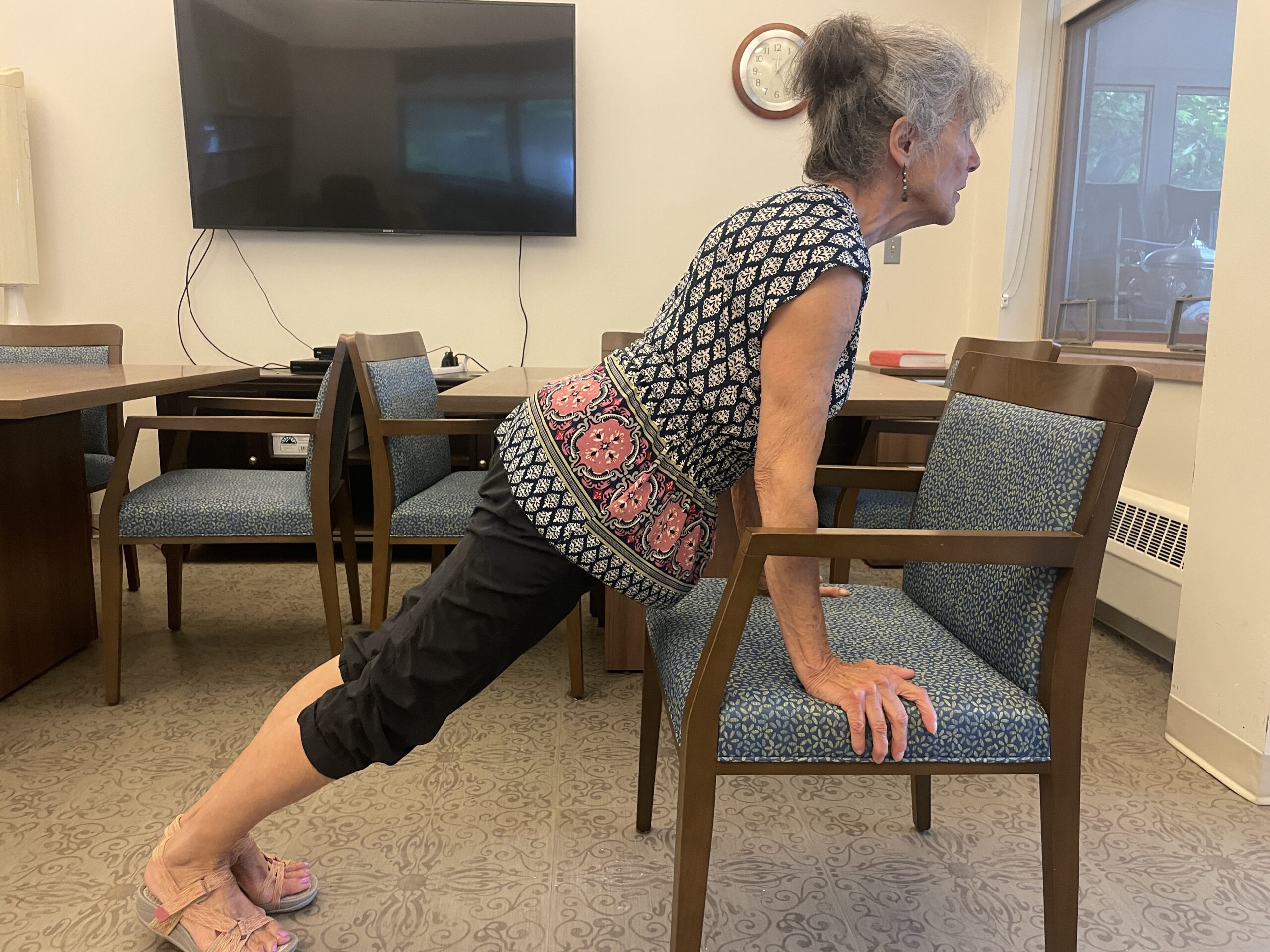Someone who has never heard of chair yoga before may think that it involves actually doing yoga in a sitting position, in the chair. Well, that is not entirely the case. Gail Perry-Borden, who teaches chair yoga at the Council on Aging, demonstrated the unique ways that a chair can be used to strengthen your whole body.
For a long time, Perry-Borden was a floor yoga instructor. However, a Parkinson’s diagnosis forced her to stop, and she had to shift her focus. After the diagnosis, she began doing neuroplasticity-based exercises at the Lynch/Van Otterloo YMCA. Once the pandemic hit in 2020, the classes stopped, and she came over to the COA, where she now teaches chair yoga.
“My brand of chair yoga is very eclectic,” she said. “I don’t stand on formalities. We do whatever possesses me at the moment.”
One of the exercises that she demonstrated was a standing plank and downward dog.
Perry-Borden said to grab a chair and have the seat facing you with your feet about a shoulder-length apart. Then, you hold onto each side of the seat, underneath the arms of the chair, holding your body at about a 45-degree angle.
Perry-Borden then said to transition into downward dog.
“You’re going to lift up the rear through the heels, and stretch through the intercostal muscles and place our heels down.”
She said that exercise is particularly great for upper-body strength and that you should make sure to breathe, which is a big part of yoga.
“And we breathe, always. We come up through the mouth when we’re exercising and our head is lower than our heart, because it will equalize the pressure in our brain so that our blood pressure doesn’t spike.”
In addition, Perry-Borden said there are a variety of other exercises that can be done using the chair, like grabbing your leg and placing it behind for a quad stretch, or holding onto the head of the chair and lunging outward.
“There really are all sorts of things you can do in a chair,” she said.
During her classes, Perry-Borden not only works on the body, but the spirit and the mind as well. At the beginning of class, she spends time with the roughly 13 participants doing trivia and riddles before they begin. Afterward, she leads them through relaxation techniques that she says work so well that some come close to falling asleep.
She said the most important part about group exercises like these is the social aspect, which helps to create a positive energy.
“It’s an easy form of taking care of yourself,” Perry-Borden said. “When you’re in a group of collective energy, that’s what these classes are that make them work so well.”

